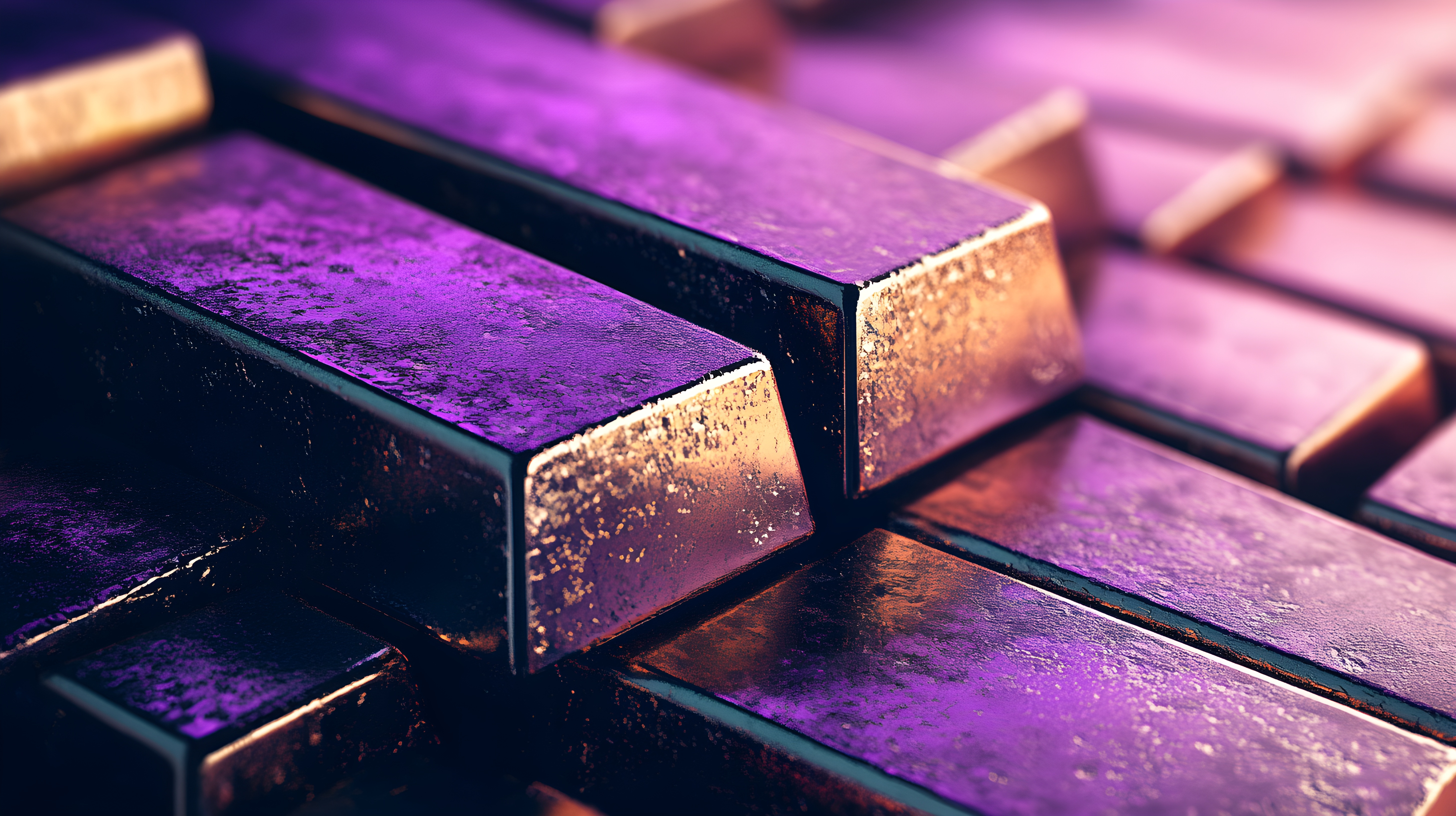What Is the Rarest Color of Gold?
Unveiling the Rarest Colors of Gold: Blue & Purple Alloys Explained
Traditional pure and raw yellow forms of gold aren’t always the style of choice in the precious metals market. Instead, various colorful developments are ensuring gold remains in demand. One of the rarest colors is blue gold, which adds distinct elements to boost its reflective quality. Below, the professionals from First National Bullion, the best place to buy gold in Carlsbad, share details about the rarest color of gold and the advantages it could add to your portfolio.
Blue Gold
Gallium is used to create a blue tint that not only sticks out but makes this one of the rarest colors among precious metals. Each mixture provides a tint that helps blue gold products make distinctive statements, whether a modern look with iron or a natural blueish-indigo color from indium mixtures.
Blue gold is more resilient to cracking or breaking, which seems beneficial. However, it’s hard to shape in industries such as the jewelry world. As a result, products created with blue gold are at a minimum, often making them the rarest.
Some advantages of blue gold include its distinctive nature and high value. The unique look of products like watches gives them the exclusivity buyers and traders seek. The customizable color variations favor blue gold for many high-end items.
Factors to Consider
Although blue gold is considered the rarest and has true value, its limited applications are a factor to consider. This alloy’s fragility makes it unsuitable for the largest pieces of jewelry or functional items that require higher levels of durability.
Even with great value, blue gold products are one of the most expensive options on the precious metals market. Other standard gold pieces, such as white and yellow gold, aren’t as costly, but they lack the exclusive and decorative nature blue gold products provide.
Purple Gold
Among gold, the unique purple color of this precious metal alloy makes it another rare choice. Its vibrant shade stands out to buyers and traders, especially as a product that can be highlighted.
One reason for purple gold’s rarity is its brittle nature, which prevents it from creating stable and workable material. That alone increases its perceived value. Purple gold is more challenging to find than traditional gold alloys, causing its pricing to increase significantly. The precious metal alloy is used to make various products in the electronics and jewelry industries.
Boost Your Portfolio
To find blue gold or purple gold options, along with other rare gold colors, you should visit reputable precious metal firms. The professionals within these boutiques can help you find the best items for your portfolio and give you the knowledge you need regarding maintenance, storage, and more.
No matter what type of precious metals you’re looking to buy or sell, from palladium bars to silver coins or Carlsbad gold and bullion, trust the reputable dealers at First National Bullion and Coin. You can rely on our experienced professionals when you’re looking to add precious metals to your collection or investment portfolio. Call one of our precious metals experts today.
The statements made in this blog are opinions, and past performance is not indicative of future returns. Precious metals, like all investments, carry risk. Precious metals and coins may appreciate, depreciate, or stay the same in cash value depending on a variety of factors. First National Bullion does not guarantee, and its website and employees make no representation, that any metals for sale will appreciate sufficiently to earn the customers a profit. The decision to buy, sell, or borrow precious metals and which precious metals to purchase, borrow, or sell are made at the customer’s sole discretion.


